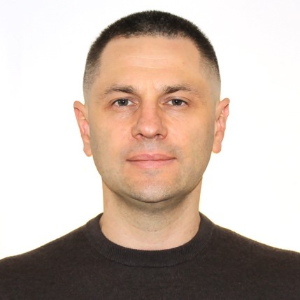Title : Periarticular gunshot fractures with the formation of primary soft tissue and bone structure defects
Abstract:
Background: Gunshot wounds to large joints in the structure of limb injuries, with the beginning of the full-scale Russian-Ukrainian war, increased from 16 to 23%. In the structure of joint injuries, a combination of soft tissue defects and bones of the epimetaphyseal area occurred in 14% of the victims. According to our research for 2024, the most common bacteria that cause infectious complications in gunshot wounds of the extremities are Acinetobacter spp. -28%, K. Pneumoniae-26%, E. Coli -13%, Ps. Aeruginosa -10%.
Purpose: The aim of the work was to analyze the results of treatment of patients with gunshot periarticular fractures with the formation of soft tissue and bone defects.
Methods: An analysis of the treatment of 85 victims with this category of injuries was carried out, with an average age of 36.8 years (19-62), 81 men and 4 women. STD has been divided into three types (Ferreira N, Tanwar YS. 2020): alpha - STD closes without reconstruction, beta - requires reconstruction, and gamma - soft tissue reconstruction is not possible. Epimetaphyseal BD were divided into three groups: A - epiphyseal defect, B – metaphyseal defect and C - epimetaphyseal defect. Each group included three subtypes: I – BD up to 25%, II – 26-50% and III – 51% or more. Surgical treatment of this group of patients included three stages. During the first stage of treatment the debridement of the gunshot wound was carried out using a sufficient amount of saline, the reduction of bone fragments with the restoration of the limb axis, and the stable fixation of bone fragments using external fixation devices. During the second stage of treatment, the soft tissue defect was closed with the replacement of the bone defect with a spacer with the antibiotic gentamicin. During the third stage of treatment, reconstructive surgeries on bone defects were performed.
Results: In the structure of this category of wounded , the elbow joint prevailed - 24, knee - 23, ankle - 14, shoulder - 12, hip - 11 and wrist - 1. The median follow-up was 12.8 (6-17) months. Contractures in this category of patients occurred in 78.7%. Delayed union after autoplasty, osteosynthesis, the Masquelet technique and scaffolds in 88% of cases. Deep infection was 8.7%.
Conclusion: Treatment of the victims with gunshot combined defects of soft tissues and bone structure of periarticular localization is a difficult challenge today. Debridement, reduction and closure of soft tissue with planned reconstructive surgery allow a good treatment result. High percentage of joint contractures, infections and amputations of limbs persists, which leads to the search for other approaches to treatment.
Keywords: combat trauma, joint injury, soft tissue defect (STD), bone defect (BD).



